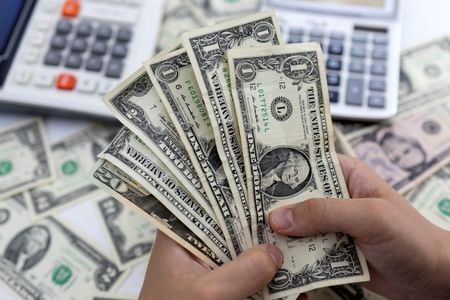




Philippines Trade Update: Trade trajectories trend along
 DOWNLOAD
DOWNLOAD

Policy Rate Updates: Double cut finale
 DOWNLOAD
DOWNLOAD

Monthly Economic Update: One for the road
 DOWNLOAD
DOWNLOAD


Selloff in longer-dated Treasuries leaves yield curve least inverted since May

NEW YORK, July 1 – Benchmark 10-year U.S. Treasury yields rose to their highest levels since late May on Monday at the start of a holiday-shortened week that will likely be marked by low trading volumes.
The jump in yields, which move inversely to prices, occurred a day after the first round of voting in France’s national elections suggested that Marine Le Pen’s National Rally (RN) scored a smaller win than some polls had expected.
At the same time, US President Joe Biden’s widely panned performance in a debate last week may be prompting investors to price in a greater likelihood that former President Donald Trump will prevail in the Nov. 5 presidential election, putting extra pressure on Treasuries, said Thierry Wizman, global forex and rates strategist at Macquarie Group.
“For a variety of reasons having to do with fiscal policy, tariff policy, and immigration policy, we do believe that a prospective Trump administration in 2025-2028 will be more inflationary than a Biden administration,” he said.
The selloff in the longer end of the curve suggested that the move was not related to concerns about the Federal Reserve‘s fight against inflation, but reflected concerns about rising budget deficits under a second Trump administration, said Lawrence Gillum, chief fixed income strategist for LPL Financial.
“There’s some election anxiety that’s being brought into the markets with the increase in the odds of Trump winning the presidency,” he said.
The yield on the benchmark US. 10-year Treasury note rose 13.8 basis points to 4.481%. The yield on the 30-year bond rose 14.2 basis points to 4.644%.
Ten-year Treasury yields pulled back briefly following a reading by the Institute for Supply Management that showed U.S. manufacturing contracted for a third straight month in June and a measure of prices paid by factories for inputs dropped to a six-month low amid weak demand for goods.
The two-year US Treasury yield, which typically moves in step with interest rate expectations, rose 5.2 basis points to 4.772%.
The selloff produced a “bear steepener,” in which longer-duration Treasuries lost more ground than those with shorter durations, leaving the closely watched gap between yields on two- and 10-year Treasury notes at a negative 29.3 basis points, its least inverted position since May.
Trading will close early on Wednesday and the bond market will be closed on Thursday due to the U.S. Independence Day holiday.
Reporting by David Randall; editing by Jason Neely, Anil D’Silva, Alexander Smith and Paul Simao
This article originally appeared on reuters.com





 By Reuters
By Reuters